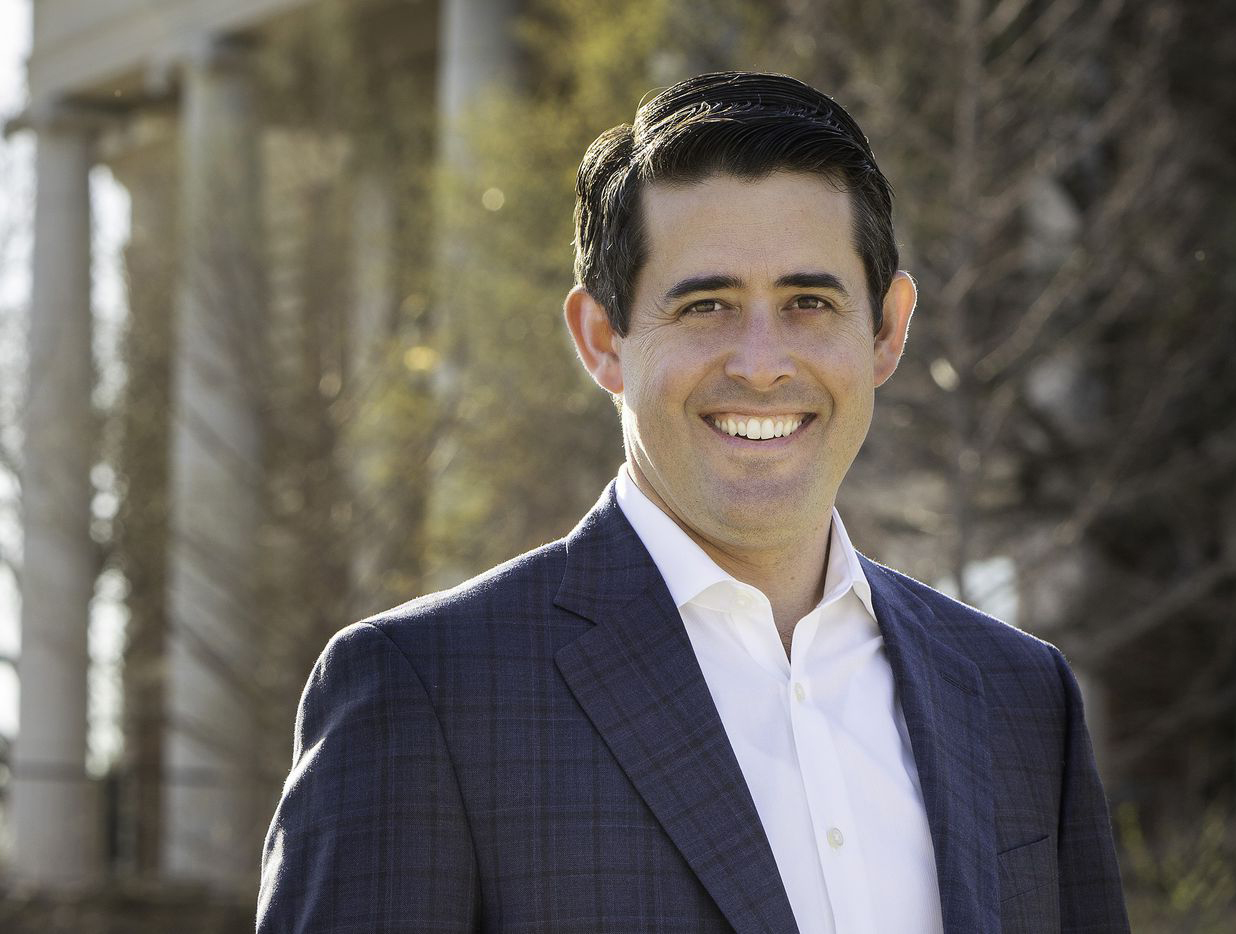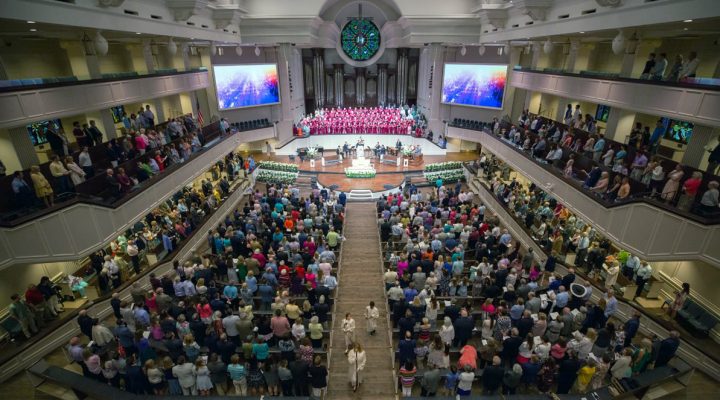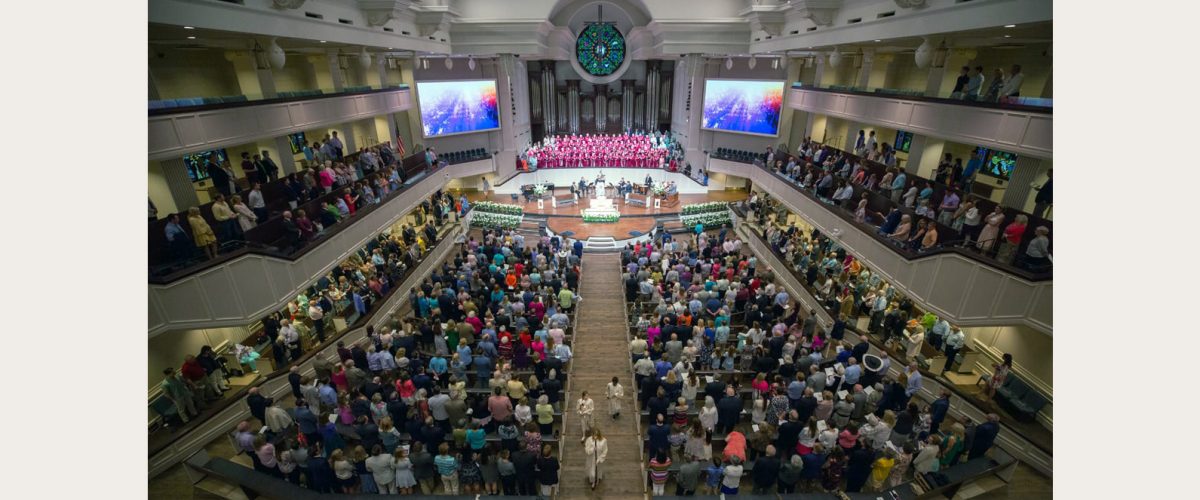Observers both inside and outside The United Methodist Church these days puzzle over a question: Why is it so hard for local churches to take their property with them if they leave the 12-million-member worldwide denomination?
A March 4 special session of the North Texas Annual Conference to decide the fate of 41 local churches — among them a controversial megachurch — provided a case study in the hurdles faced by disaffiliating congregations. About 300 churches comprise the North Texas Conference, which stretches from Paris on the east to Antelope in the northwest, from Mabank in the south to Texas’ border with Oklahoma in the north.
The ‘trust clause’
All United Methodist churches operate within what’s known as a “connectional” structure, unlike denominations in which local congregations are the basic unit of organization. Wesley developed the “connexion” (in 18th century English) to link pastors and faith communities of his far-flung Methodist movement since it functioned outside the Church of England.

A stained glass window in St. Botolph’s church, Aldersgate, depicting John Wesley preaching to a crowd at Moorfields in 1738, Circa 1989. (Photo By RDImages/Epics/Getty Images)
After an incident in which one of the local Methodist societies was hijacked by dissidents, Wesley instituted what has become known as the “trust clause.” The trust clause carried forward to the United States when the Methodist Church was established in 1789 after the Revolutionary War ended.
The trust clause states that all United Methodist property doesn’t belong to the local congregation but is held “in trust” for the denomination through its basic unit, the annual conference. As a result, actions involving a United Methodist church’s property can’t be undertaken without the approval of its annual conference. This restriction always includes sale of real property such as sanctuaries, education buildings and parsonages, and sometimes can include major building renovations, mortgages and any other property-related debt.
A local church seeking to disentangle itself from the denomination must go through the annual conference to keep its property while gaining its institutional freedom.
Thus, a local church seeking to disentangle itself from the denomination must go through the annual conference to keep its property while gaining its institutional freedom. Since 2019, more than 2,000 congregations out of 30,000 U.S. United Methodist churches have left.
On March 4, 41 churches in the North Texas Annual Conference gained their freedom from the UMC. Among the departing churches, the former St. Andrew United Methodist Church in the northern Dallas suburb of Plano, offered a case study in how disaffiliation currently works in the UMC.
A public document
Baptist News Global obtained a copy of St. Andrew’s disaffiliation agreement in advance of the March 4 meeting — over objections of North Texas Conference leadership. St. Andrew’s disaffiliation agreement was partly displayed, discussed and voted upon in a Feb. 23 open session of the North Texas Conference board of trustees. Thus, the agreement could be considered a public record under the UMC’s “open meetings” rule found in Paragraph 722 of the Book of Discipline, the collection of church laws. North Texas leaders dispute this interpretation.

Arthur Jones at St. Andrew United Methodist Church
Possibly because of the dispute over St. Andrew’s agreement, the disaffiliation agreements of all 41 departing congregations were posted online March 4. However, none of the posted agreements included the amounts each church must pay to the North Texas Conference to retain their church property. Most agreements used a template designed to fulfill the requirements in Paragraph 2553, the only sanctioned UMC exit process.
During the March 4 meeting, a clergywoman moved for a recess to review the documents. However, clergyman Chris Yost, chair of the conference board of trustees, told the assembly the agreements were not negotiable. In other words, although United Methodist law states the annual conference vote is essential to the disaffiliation process — and although conferences typically vote on most church-related money matters — the members were told they could not amend any of the agreements. Conference leaders had negotiated disaffiliations confidentially in advance and only needed a vote to ratify, Yost said.
Megachurch drew most resistance
Even without financial details, the disaffiliation agreement of the 6,500-member St. Andrew Church drew the most resistance.
St. Andrew’s exit journey began in September 2022, when Senior Pastor Arthur Jones and Executive Committee Chair Kathy King announced the church’s leadership intended to leave the UMC without following the disaffiliation process outlined in Book of Discipline Paragraph 2553. The announcement caused an uproar in the North Texas Conference and beyond.
Disaffiliation advocates looked to St. Andrew for a model of how to exit the UMC without paying the conference two years’ worth of “fair share” ministry contributions known as apportionments, plus a pro rata portion of unfunded clergy pension liabilities. UMC loyalists were outraged at St. Andrew’s dissident posture, even to the point of proposing church charges against Jones for violating United Methodist law.
After a flurry of public criticism, including YouTube videos by two prominent pastors, Stan Copeland and Billy Echols-Richter, then-bishop Michael McKee initiated confidential negotiations with St. Andrew regarding disaffiliation. Over the next four months, while the conference board of trustees considered other disaffiliations, St. Andrew’s leadership apparently was convinced that following the UMC’s exit process was more advantageous than pursuing its independent path.
St. Andrew’s 16-page disaffiliation agreement contains a curious anomaly.
St. Andrew’s 16-page disaffiliation agreement contains a curious anomaly, however. Instead of claiming, like most exiting churches, that it was leaving because of the conflict over LGBTQ acceptance, St. Andrew’s hedged its “reason of conscience” for leaving in an ambiguous paragraph:
Nothing herein shall be construed or interpreted as St Andrew’s having voted in favor of or against any particular perspective, position, or policy concerning human sexuality issues or any other social issues; on the contrary, St. Andrew has voted to disaffiliate because its collective conscience requires it to disaffiliate from a denomination that St. Andrew’s believes to be mired in institutional divide and unable to alter its path to avoid continued membership decline. The Conference Trustees’ execution of this Disaffiliation Agreement certifies that St. Andrew took a congregational vote that satisfies the requirements imposed by The Book of Discipline of The United Methodist Church (2016), as amended by the General Conference of 2019.
St. Andrew’s “reason of conscience” apparently was crafted to meet alternative language of Paragraph 2553, as Yost explained during the March 4 meeting.
Two roads to disaffiliation
The statement’s ambiguity adds to confusion about why it’s so hard to exit the UMC. Here again, the bureaucratic procedures of The United Methodist Church came into play.
The Judicial Council, the denomination’s “high court,” issued two rulings March 1 upholding different bishops’ contradictory interpretations of a legitimate “reason of conscience.” North Texas leaders chose to follow Judicial Council Decision 1453, upholding Alabama-West Florida Conference’s process of not questioning exit reasons, rather than Judicial Council Decision 1459. In the latter ruling, the high court affirmed Wisconsin Conference’s process that requires a disaffiliating church to “explain how the current Discipline or actions or inactions of the annual conference have affected the mission and unity of the congregation.”
Disaffiliating North Texas churches simply “lucked out” that their conference hasn’t required them to justify why they want to leave.
In other words, the annual conference holds ultimate power over disaffiliations. If the bishop and conference leaders require disaffiliating churches to explain their reasons for leaving, they’ll have to explain themselves. Disaffiliating North Texas churches simply “lucked out” that their conference hasn’t required them to justify why they want to leave.
The bottom line in St. Andrew’s case may be simple: St. Andrew wanted to get out from under the UMC’s welter of rules and fractious politics, as its senior pastor said, and its leaders finally agreed to follow the official exit process as its off-ramp. The cost of leaving the UMC isn’t cheap, as other disaffected churches have found. In St. Andrew’s case, the “exit fees” amount to more than $881,000, according to the disaffiliation agreement.
St. Andrew’s capitulation to the Book of Discipline’s rules, including the trust clause, bolsters The United Methodist Church’s legal position protecting church property and its institutional practice of conference authority, however unevenly those concepts are applied throughout the denomination. Although under civil legal assault in conferences such as Florida and Western North Carolina, the trust clause in particular has weathered another local-church challenge.
All 41 churches seeking disaffiliation were approved overwhelmingly in one vote March 4. After the vote, the gathering shared a litany of farewell promising to regard one another as siblings in Christ and to pray for their mutual welfare. Then representatives of the exiting churches left the meeting with their property secure in local hands, while the conference leadership remained secure in its authority over how future departures likely will be conducted.
Cynthia B. Astle is a veteran journalist who has covered the worldwide United Methodist Church at all levels for more than 30 years. She serves as editor of United Methodist Insight, an online journal she founded in 2011.
Related articles:
Most congregations exiting the UMC are white and located in the South
Truett Seminary names a controversial Methodist bishop to its faculty
Texas megachurch relents; follows United Methodist rules to exit denomination
Truett Seminary names theologian for breakaway Methodist group to chair Wesleyan Studies program


